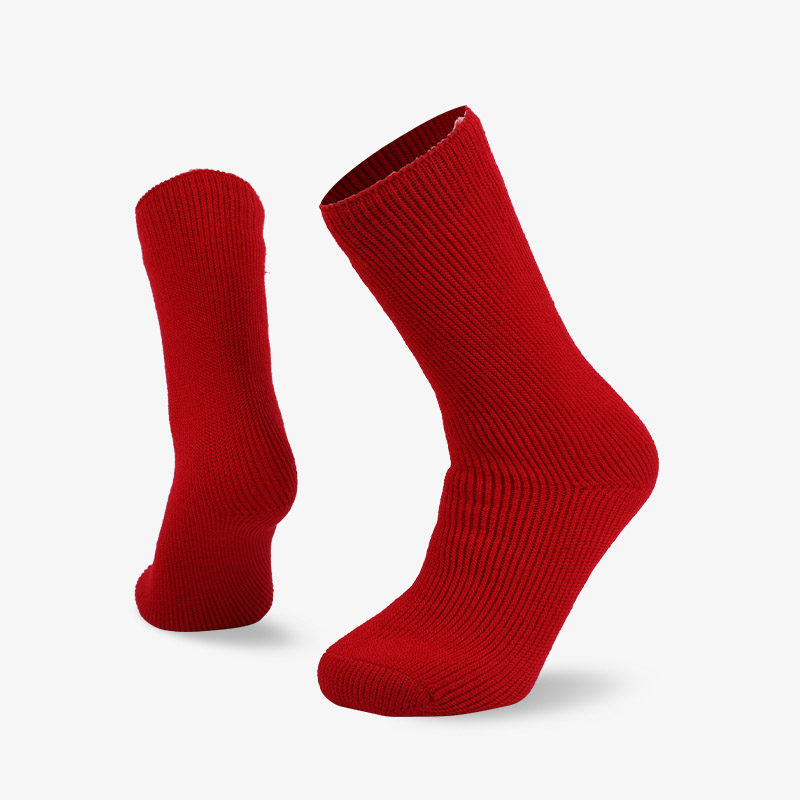

Wearing socks during travel is of great significance to […]
Wearing socks during travel is of great significance to your backpacking life. Like shoes, socks must be carefully selected, because you have already cooperated, you can expect many situations.
Consider the journey you imagine
Socks for backpackers in different environments, in order to ensure warmth, softness, and wear-resistant design. According to your various planned road conditions and expected weather conditions, prepare appropriate socks. You can choose them according to the following rough categories:
Lining socks (lining): Lining socks are very thin, socks made of thin capillary materials are used to fit on the feet. The capillary lining the sock feet drains sweat to keep the feet dry and comfortable. Afraid to wear lining socks, so I can only wear them between the socks and the feet. Remember that their design is worn in other socks
Lightweight trekking socks: Warm weather and leisurely itinerary design, lightweight trekking socks emphasize sweat-wicking and warm climate than comfortable, thick, warm, lining socks and durable. In addition, they are also very soft. But they only have a limited thickness in hot weather, so stay comfortable to travel. Most lightweight trekking socks are made of material and sweat. Wear these socks without lining socks.
Middleweight hiking socks: These socks are designed to provide comfort and reliable insulation for cold climates. They are thicker and warmer than lightweight hiking socks. Favorite high-heeled shoes and the largest areas of the feet that are easy to wear are specially thickened and can be measured. This type of socks should be worn with lined socks.
Hiking socks: Hiking socks are the warmest and softest thick socks. They are long marches, dangerous terrain, and cold temperatures and designs. Usually hiking socks and warm weather are too thick and too hot for low-difficulty hikes.
Consider optional materials
Wool and wool are very popular natural materials for making socks. It is warm and soft and can keep the heat even after damp. Unfortunately, wool socks are not easy to dry, and they are also easy to itch when worn on the feet (note: the new wool mohair material does not have such a problem). If some other materials are not added, they are also easy to wear. Wool blends (composed of wool and synthetic materials) are popular because they solve these problems.
Synthetic insulation material-REI provides some number of synthetic materials such as wool as the disadvantage of not higher heat retention than wool. These materials (holo hollow polyester fiber (R), (R), thermostat (R)) are very soft although they do not wear warm toe hair. They are also easy to dry and wear-resistant. This material can be used in socks of various types and thicknesses.
Wire-a natural insulating material is more comfortable and lighter than other materials, but is wear-resistant. Sometimes it serves as a reliable sweat material to support socks.
Synthetic wicking materials (such as polypropylene, Coolmax) are used in the production of line socks and are also woven into thicker climbing socks, reinforced sports socks. It is not recommended to use cotton socks when hiking. During the journey, cotton socks absorb sweat and dry slowly. However, they do not heat up after being stored in heat, which makes it easy to cause discomfort and blisters.
Bottom material-a lot of hiking socks on the heel and sole, and toes to improve the comfort of thickening parts. These are achieved in these areas by increasing the density or adding some tissues such as acrylic materials. These special thick socks can save socks during difficult journeys.
Supporting materials-most of today's hiking socks are added with a small amount of stretchable nylon or card materials. These materials keep the socks in their original shape and tighten so that the socks are less draped. If possible, put on the type of socks you are considering and take a quick step, feel their socks at the bottom, and confirm the size of the fabric-your socks must fit. The material of twisting socks will not make any backpacking feel comfortable.
